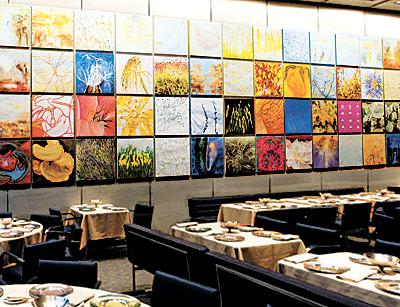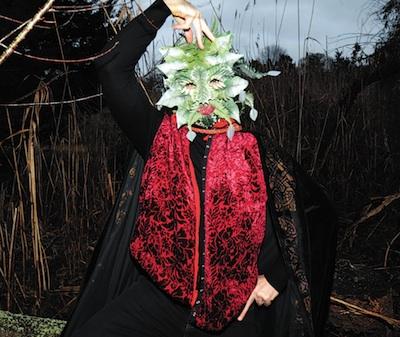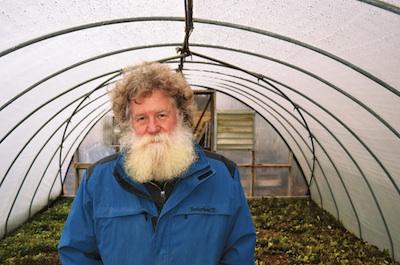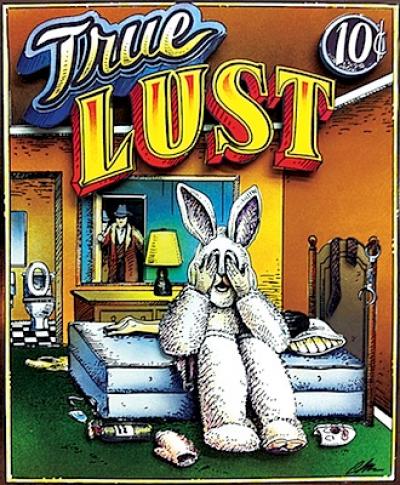Jewelry That Comes Alive in Your Hand
Jewelry That Comes Alive in Your Hand
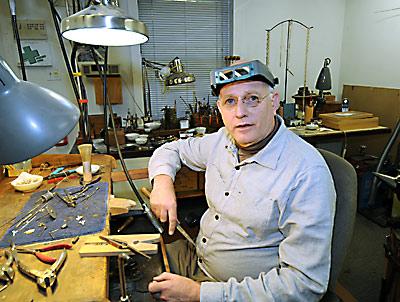
John Iversen, a jeweler and goldsmith, balks at being called an artist, but it’s impossible to look at the cuff-like bracelets, necklaces, earrings, and brooches he has made over the last 30 years and not see them as wearable sculptures. Apparently the curators of the Drawing Room agree, as they are showing his elegantly wrought jewelry and works on paper in the same gallery that has shown the artists Jennifer Bartlett, Robert Harms, and Costantino Nivola, among others.
“John is deeply involved in the fresh use of his materials and is keenly sensitive to their tactile appeal,” Emily Goldstein, an owner of the Drawing Room, wrote in an e-mail. He “considers the ‘feel’ that his forms will have on the body of the wearer. . . . The brooches and bracelets all have a movement that is truly magical.”
His designs start out on paper, he said recently at his studio on Springs-Fireplace Road in East Hampton. “The drawings are part inspiration, part guide. . . . A lot of drawings are made with jewelry in mind, but not every sketch becomes a piece of jewelry.” Sculpture, which he also does, comes from a totally different place, he said. “Does it make you feel like you want to pick it up?”
That, aside from any consideration of aesthetics or craftsmanship, is a strength of his work: Whether it is a Pebble River bracelet, or his berry cluster Double Jacks earrings made of pink and gray akoya pearls, pink coral, two black diamond beads, and 18-karat gold, or a cuff bracelet made of 14-karat red gold, 18-karat yellow gold, 14-karat green gold, and 14-karat white gold, the hand reaches for it.
“Working in three dimensions is a different experience. . . . With the drawing it remains abstract. Working in three dimensions you get to a point that you can’t imagine when you’re drawing . . . it’s still a fantasy. You’re never quite sure it will really work, so seeing the final piece is always a thrill because you made it work.” He added that he usually makes a point of finishing a piece even if he hates it. “You can get too much of it and it’s like a constant bickering.”
Mr. Iversen may have begun these ruminations in Hamburg, where he was born in the early 1950s. He and his family moved to Dusseldorf where, as a lad of 15, he enrolled at the College for Metal Industries. As a child, he said, he always liked making things. In Dusseldorf he learned to saw and file. He then had the good fortune at age 17 to pursue a jewelry making internship with an uncle, Karl H. Stittgen, in Vancouver, British Columbia.
Mr. Stittgen, who had moved there as a watchmaker in 1952, at that point was a self-taught jeweler who at first translated what he saw in nature into jewelry. Mr. Iversen spent four years there, where, he said, “The awareness of nature came . . . mainly from living in Vancouver and all the Asian influences there. Coming from small-town Germany without any diversity, it hit me like some sort of shock — speechless.”
The goal of his technique of nature casting, similar to lost wax casting, is not to recreate a hydrangea blossom or gingko leaf, however, but to produce his concept of that leaf or blossom as a jewel. In this way, the piece is imbued with the feeling of its maker, another distinction of Mr. Iversen’s work. “Jewelry in a way is an emotion. The instinct to wear something, put something on your body, is a deep-rooted feeling. It’s very human and one of the things that sets us apart from other animals.”
After his stint in Canada, Mr. Iversen returned to Germany, where he spent three semesters at the Staatliche Zeichen Academy’s College for Jewelry Design and Manufacturing. In 1978 he moved to New York City, but felt unprepared to take the city by storm quite yet. “You start getting jobs but you don’t want to do that for the rest of your life,” he said, perhaps referring to his job cleaning castings in Midtown.
At age 24 or 25, “you find yourself there thinking, what am I going to do now? Well, you say, this is what I’ve got.” The exigencies of making a living superseded his ambition to make jewelry, especially given his modesty about his own level of talent.
“I learned jewelry making,” he said, “but part of me wasn’t that good at it. I had a little bit of an artistic bent . . . I didn’t really pursue art as a career and I didn’t really pursue jewelry as a career. It was more a twist of fate.”
“Fine artists have always made jewelry,” he went on, “also, a few jewelers became artists. It’s all a continuum. Some of the earliest pieces found were pieces of jewelry. The Venus of Willendorf, for instance, was probably an amulet.”
His fortunes began to change once he quit the job of making wedding rings and took the chance of going out on his own, eventually having his work accepted by Artwear, an international SoHo jewelry gallery that was considered a hub of innovation and inspiration. Not long after that his work was featured on the cover of Vogue and in Harper’s Bazaar and, the rest, as they say, is history. Toward the end of the 1990s, Mr. Iversen moved with his wife and son to the East End.
Boxwood, oak, gingko, and maple leaves, pebbles, seeds, water, and petals — hydrangea and eucalyptus mainly — appear again and again in his pieces. He has also worked with enamel.
He uses hardly any gemstones. “It’s basically metalwork — combination. He also uses semiprecious stones, both matte and shiny, especially in his berry cluster series: amber, lapis, tourmaline, coral, jade, lemon chrysoprase, pink coral, and labradorite.
He and his assistants make everything in his studio, except for stone setting, gold plating, and metal casting. Molds are made in New York and what comes out is sent back for him to finish, which often involves manipulating the surface of the metal by grinding, filing, engraving, or oxidation.
Some bracelets look either like a jigsaw puzzle, chain mail, or metal that has been shattered and reassembled. He uses a tiny jewelry saw to cut the gold, silver, brass, and nickel.
The edges of each piece are different, jagged in different ways. After years of working on the engineering and design, Mr. Iversen developed small hinges made of gold affixed to the back of the bracelet that keep the pieces together. These give him great satisfaction, like knowing a secret. Thanks to the flexibility given the piece by these hinges, a bracelet made by Mr. Iversen often feels like a Slinky on the arm, he once remarked to Ms. Goldstein. What makes the pieces so persuasive, he said, is that “they live in your hand. They’re not so static.”
Mr. Stittgen, Mr. Iversen’s uncle, abides by the Japanese tenet in his jewelry and now his ceramics of “the beauty of imperfection,” an idea that doubtless had an impact on his nephew while he was in Canada.
“The whole idea of a perfect piece doesn’t really work,” he said. “You’re always sort of moving on; you realize in hindsight that a piece was really a good one or one that you were trying to aim for,” which is why he sometimes puts it away. “Internally you can mature and then you understand and can forgive yourself when you look at it again. The zeitgeist is be in the here and now, but that has become a cliché. Time does its own work by itself. It’s an important part of art.”


